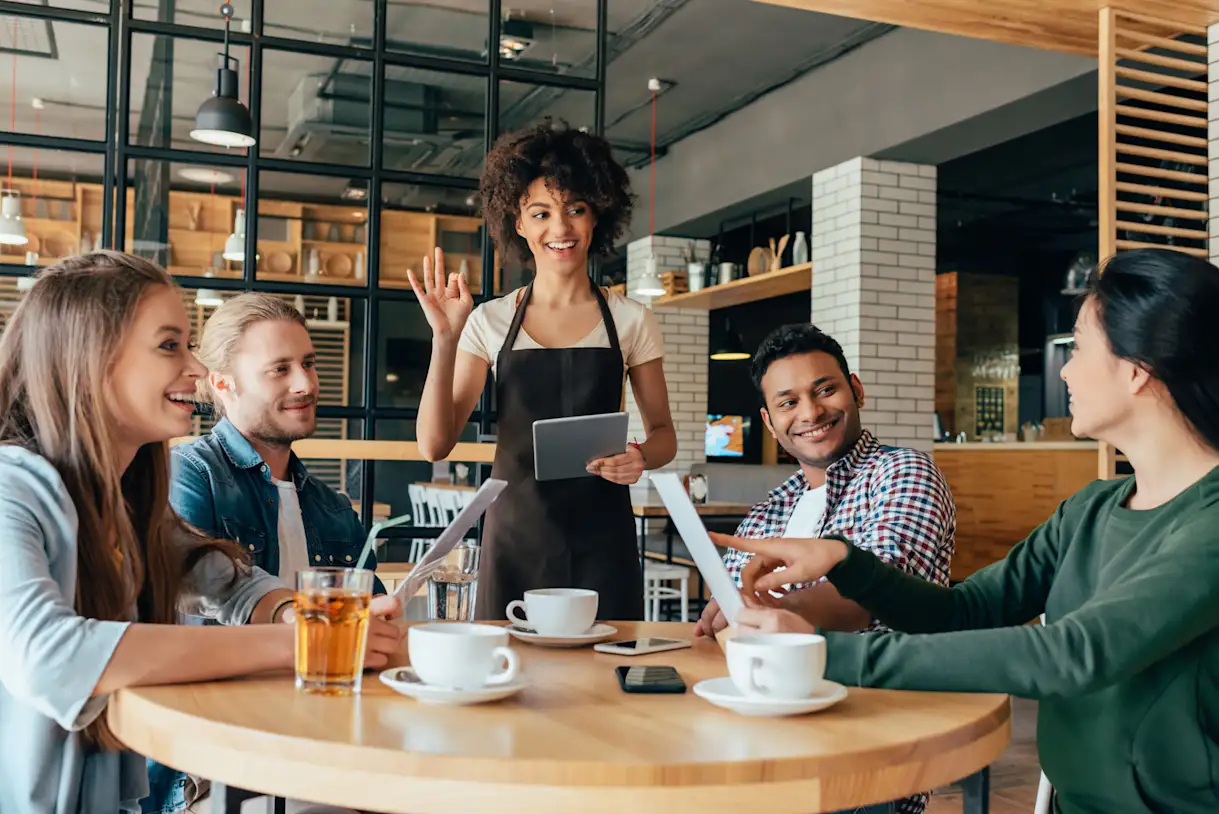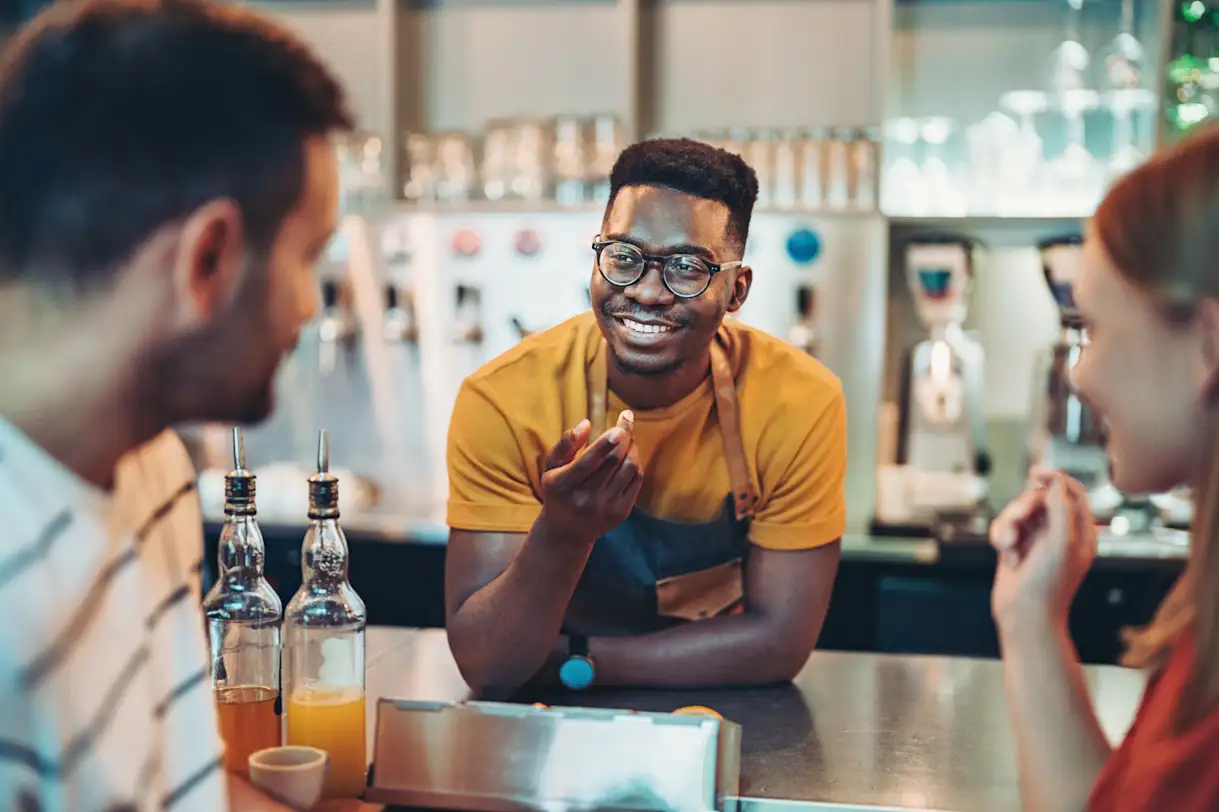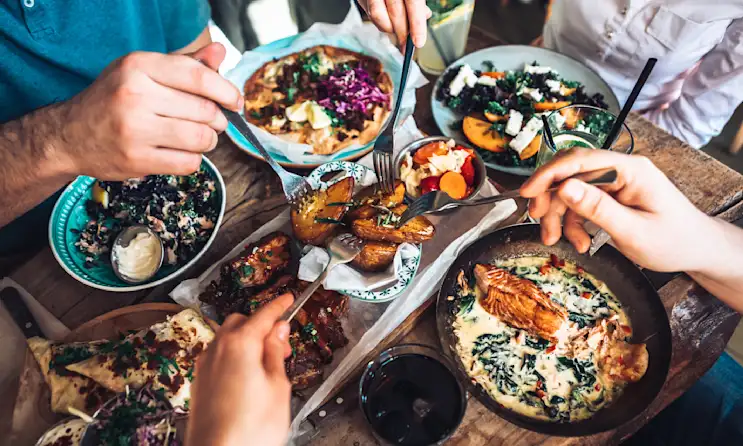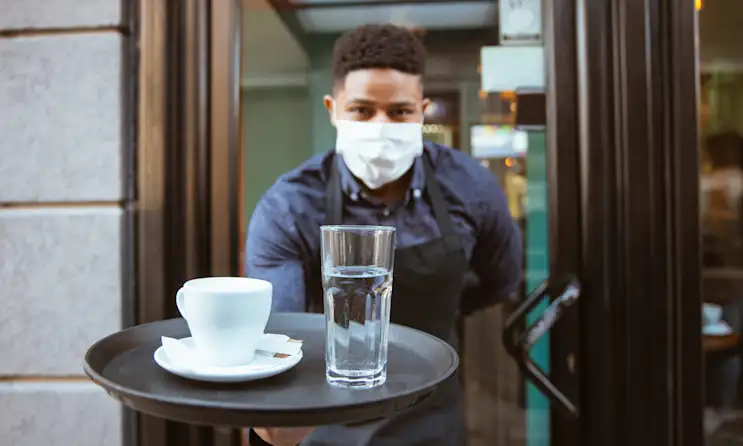Diner Relationships
How to Build Modern Guest Relationships with the Right Technology
November 4, 2021
Heather Dratler from Sage Restaurant Concepts and Darcy Kurtz from BentoBox discuss the rise of restaurant tech.
The pandemic has rapidly accelerated the shift to a single, modern restaurant experience where restaurants can connect with their guests across all of their channels — offline and online.
With support from the right technology, restaurants can build personal relationships with guests, driving repeat diners and more revenue in the process. But how exactly does this process work?
Earlier this month, we partnered with Winsight Media to speak with Heather Dratler, VP of Marketing and Brand Integrity at Sage Restaurants Concepts, and learn how their portfolio of 50+ restaurants, bars and coffee shops are building modern guest relationships.
Watch the full webinar below, and read on for the key takeaways.
The Restaurant Experience of the Past
To understand the restaurant experience of today, we must first understand the experience of the past — as it existed before the pandemic. The pre-pandemic restaurant experience was defined by three main points:
Restaurants were slow to adopt new technologies. Despite diner demand for more technology, restaurants focused their efforts on the traditional brick-and-mortar experience. This made it hard for diners to discover new restaurants, make reservations, view updated menus and order online takeout or delivery. Restaurants’ disregard of guest-facing technology cost them new potential customers and revenue.
Restaurants operated on historically thin profit margins. By focusing on the singular brick-and-mortar experience, revenue was at the whim of seasonality, slow nights, staffing issues and other factors that affected bottom lines. There was little-to-no supplemental revenue from online commerce.
Restaurants focused on traditional “on-premises” hospitality experiences. Operators focused on the on-premises dining experience, minimizing the importance of the online experience (i.e., their website). For those that did offer some form of delivery or takeout, the online guest experience was often lacking, which resulted in negative takeout experiences, bad reviews and the loss of repeat diners.
Key Example
Before the pandemic, Sage Restaurant Concepts (SRC) wasn’t using restaurant technology to enhance the guest experience. When Dratler joined the company in November of 2019, one of her first items of business was to revisit and update its tech stack.
“At that time, we had websites, but they were pretty outdated,” Dratler explained. “They were hard to update [and] we didn't update them very frequently. Outside of that we just had the standard digital platforms — Yelp, Google TripAdvisor — but we weren't putting a lot of energy into technology.”
One of the very first things Dratler did was convert SRC’s entire portfolio of restaurants over to BentoBox. “This was absolutely critical for us with…the vast amount of changes that happened across the country in different markets,” she said of the move. “It just changed so fast and furiously that we had to have a way to keep our digital profiles and our digital presence updated.”

PRODUCT
Online Ordering for Restaurants
Drive more revenue with unified, branded, commission-free online ordering.
The Modern Restaurant Experience

The pandemic prompted a new era for restaurant operations. It forced restaurants to pivot and adapt operationally, shifting to a takeout and delivery-centric model and investing in technology to support it. This has begun to create a new, modern restaurant experience that starts online.
The modern restaurant experience is now unified. Restaurants now provide diners with a 360-degree restaurant experience both in the restaurant and online — from discovery through fulfillment. No matter where and how a diner interacts with a restaurant, the experience feels cohesive and consistent.
The modern restaurant has multiple revenue streams that are optimized for higher profit margins and growth. The devastating toll of the pandemic has emphasized technology’s importance to restaurants’ bottom line. Online ordering, branded merchandise, gift cards and catering sales are all important revenue streams in the modern restaurant, and all of them are driven through the website. Restaurants can no longer afford not to adopt these technologies.
Restaurants are leveraging customer data to maximize profits. Owning the digital guest experience doesn’t just provide more revenue streams; it allows restaurants to capture more first-party customer data. Modern restaurants are using this data to drive repeat orders through marketing, personalization and loyalty programs — just like third-party ordering apps have for years.
Key Example
As they digitize, restaurants are capturing more data than they currently know what to do with. Deciphering that data will make the modern restaurant experience even better, but the process is just getting started.
"The next challenge [for restaurants] is going to be how we put that data to use to create better guest experiences,” Dratler predicted. “We're looking for ways that we can learn about our customers, segment them and [apply] personalized marketing to them.”
For example, how long after a customer orders should a customer re-engage them? If they ordered a pepperoni pizza yesterday, should they get an email encouraging them to order another one today? Tomorrow? Next Sunday, since they ordered during the football game? Would it be different if they were first-time diners versus diners who order twice a month? Would a promo code make more sense for one of those diners than another? These are the questions restaurants need to answer.
As Dratler puts it: “How can we use marketing automation and guest data to communicate with our guests with the right message at the right time that's going to keep them engaged?”

RESOURCE
The New Front of House
How restaurant technology is transforming the guest experience.
3 Ways to Build The Modern Guest Experience

The modern restaurant experience exists both online and offline, with restaurants adopting new technologies and introducing new revenue streams. To take the modern experience to the next level, restaurants need to optimize all of the new tools at their disposal. Here are three ways restaurants can build on the new and modern guest experience.
1. Meet Guests Where They Are, Online and Offline
Guests look online for information about a restaurant before deciding to dine in or order takeout. Restaurants should invest in digital technology that meets guests online and facilitates a smooth experience that creates trust.
“It used to be that you could just open your doors and they would come in,” said Dratler. “But now you're competing with cooking at home, you're competing with meal kit services, with third-party delivery, ghost kitchens [and] everything else on the internet. So we really have to ensure that we are leveraging the full marketing mix.”
The biggest part of that mix is the website, which enables restaurants to drive direct, low-commission revenue from more guests than ever. “[The] websites are some of our top-performing channels for converting reservations consistently across the portfolio,” Dratler said. “People click on [our] pop-ups. They click on the alerts. They're getting excited before they click to make that reservation. And as a result, we're driving more reservations through our direct website channel, which for anyone that uses OpenTable knows that's important.”
While online restaurant technology has greatly improved the off-premises experience, restaurants can also use it to amplify the on-premises experience. SRC’s restaurants use QR codes that enable diners to view online menus. In doing so, they’ve found more diners interacting with their website and building a deeper connection with the restaurant they’re dining in.
“These are just examples of the ways technology has really changed the way we've interacted with our guests,” Dratler said. “It's enhanced it and it's really extended that hospitality and the opportunity to communicate beyond [the] traditional experience.”
2. Adopt New Revenue Streams
The rapid adoption of guest-facing technology has made guests more comfortable connecting with restaurants online. Restaurants can capitalize on this by setting up multiple revenue streams — online ordering, reservation services, catering, gift cards and more — through their website.
For example, SRC’s restaurants sold holiday meals to go through its websites last holiday season. “That's something that we've sold as prepaid packages through BentoBox,” said Dratler. “We found that people were really craving those types of experiences last year. [It] actually allowed us to keep our doors open at Urban Farmer. It was absolutely critical during the holiday season.”
The wine share program at The Emporium in Fort Collins, Colorado, is another example of SRC meeting digital diner demand. The program includes monthly wine curations and tastings, and it uses digital channels to keep members of the program engaged between events.
“We're reaching out to them in that digital space, we're capturing them in that digital space, we're sharing information about wines and keeping them engaged,” Dratler explained. “Then they're coming in to pick those wines up. And we're throwing a wine and cheese tasting and really having that in-person interaction as well.”
“So we're seeing that marriage of the offline [and] online, and that those ancillary revenue streams are also contributing to the brand loyalty that brings them back into our four walls.”
3. Maximize Marketing and Customer Loyalty
The final piece of building the modern guest experience is investing in marketing channels and loyalty programs that create more engagement between restaurants and diners. This all adds to a more loyal customer base and stronger brand affinity.
SRC has focused its efforts on what Dratler calls “surprise and delight” moments: messages urging guests with upcoming birthdays to celebrate at the restaurant, or automated emails that offer a complimentary appetizer to subscribers when they dine-in again. In other words, as Dratler says, “[the] special touches that you’d have in the restaurant are now outside of the restaurant.”
One key factor enabling this is data and segmentation — something restaurants previously struggled to do correctly. With modern technology, restaurants can segment their guests into categories such as “people who typically order wine or desserts during takeout. “[Then] you hit them with the type of offer that’s going to make the most sense for them,” said Dratler.
Restaurant marketing tools and customer loyalty programs are essential in fostering more diner engagement that drives revenue and ultimately better guest experiences.

BentoBox Marketing & Commerce Platform
Deliver Smarter Hospitality
Want to stand out online, bring in more money, engage your diners, and streamline operations?
Recommended

Diner Relationships
15 Restaurant Dining Trends in 2023
June 15, 2023
Key statistics and insight on diner discovery and habits online.

Diner Relationships
Using Customer Feedback to Build a Better Hospitality Experience
March 23, 2021
We partnered with Resy to help restaurants improve the ways they gather customer feedback.

BentoBox News
Introducing Loyalty Program — a Free Diner Reward Program from BentoBox
February 16, 2021
BentoBox unveils a free, easy loyalty program for restaurants selling through the platform.

